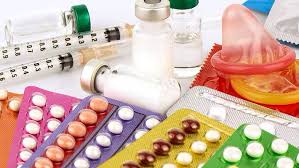It first started with the berthing of MV Maersk Nashvile in Nigeria port with a container load of substances that were alleged to be toxic.
And by Sunday, April 18, 2010 when the ship was boarded, the shock was that the said container was found to be loaded with disused motor batteries, tyres, broken black and white television sets, refrigerators and vehicle spare parts; hitherto, regular imports into Nigeria.
There are certain issues which the arrival of MV Maersk Nashville in Nigeria has brought to the fore and this should form the basis of a post-mortem on the toxic waste alert which has now turned out to be a mere hoax. After Maersk Nashville, there have been two others, and the latest eventually creating a face-off between Nigerian Ports Authority (NPA)and National Environmental Standards and Regulations Enforcement Agency (NESREA).
First, were it not for the media, the ship may quietly have sailed in and sailed out, or she may have been arrested without so much noise. But, without the media hype, the seemingly ordinary disused motor batteries, tyres, broken black and white television sets, refrigerators and vehicle spare parts which are regular imports into Nigerian would have been just another consignments.
Second, the National Environmental all manners of junks that Nigerians import, hence its decision to raise an alarm or it Standards and Regulations Enforcement Agency is either unfamiliar with is simply too eager to be in the news. There are speculations that it actually leaked the arrival of the ship to a section of the media.
More important is the fact that NESREA has helped to draw attention to the failure of the government agencies whose responsibilities it is to ensure that junks, environmentally unfriendly, unhealthy and dehumanizing items like used tyres, used batteries, used refrigerators, etc are no longer shipped into Nigeria. A visit to any of the markets in Nigeria will reveal the high preference for imported fairly used clothing (including under wears!), batteries, auto spare parts, refrigerators, household items and appliances; most of which had been discarded by much more comfortable and well-informed Europeans.
The Basel Convention to which Nigeria is a signatory actually lists products under Code A1180 to include: waste electrical and electronic assemblies or scraps containing components such as accumulators and other batteries mercury-switches. Others are listed as: glass from cathode-ray tubes and other activated glass and PCB-capacitors, or contaminated with constituents such as cadmium, mercury, lead, polychlorinated biphenyl.
Certainly, those who import these items are either ignorant of the health implications or rather chose to ignore the hazards because of their selfish pecuniary interests.
A wide range of abnormal health conditions such as: congenital heart diseases, cancer, and leukemia are traceable to these toxic products, all of which have long been categorized as toxic in the developed world.
So, the disused motor batteries and other items which were found in the containers on board those ships actually fall under the category of toxic wastes. If they are toxic for human beings in Europe, Asia and America, while should they not be toxic (and are just classified as mere fairly used items) here in Nigeria and indeed, Africa.
The mere fact that they are on display in all nooks and crannies of Nigeria does not change the fact that they are injurious to humans.
Finally, what have the Standards Organization of Nigeria, the Nigeria Customs Service and even NESREA (which suddenly woke up from its slumber) been doing all these years: allowing these items to be brought in while they turn the other way? As for the Customs, how many of such cases of concealment have the Customs allowed to leave the ports and how many containers that are loaded with injurious items have escaped the supposedly prying eyes of both NAFDAC and SON?
NESREA has earned its relevance by the interceptions and discoveries, all well meaning Nigerians should support the agency.
















Discussion about this post